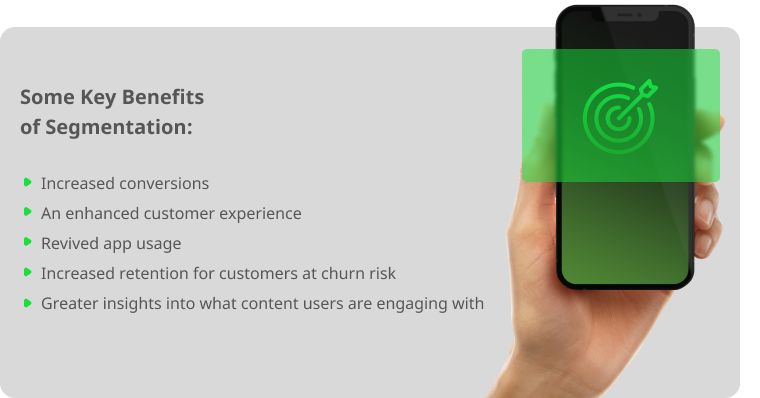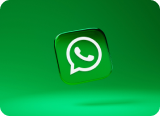Push Notification Segmentation – Five Key Criteria to Consider
In a relatively short period of time, the push notification service has emerged as a preferred medium of customer communication for businesses. Whether it’s transactional, promotional, or customer retention-related messaging, companies across verticals are leveraging push to reach their audiences directly and improve customer services. Yet, only a handful are seeing the level of engagement they had hoped for. What are these businesses doing right to convert their messages to actual orders? The answer lies in customer segmentation.

When it comes to sending mobile push notifications to customers, a one-size-fits-all approach simply does not work. Users are already swamped with messages throughout the day, and do not bother engaging with those that are not relevant to them. By now, most businesses likely know this.They personalize messages by adding small details like the user’s name, etc. or the items they browsed to show the customer they recognize them and value them. While this does add a personal touch, it’s really not enough to catch the user’s attention unless the actual content aligns with their interests. This is achieved through segmentation, where app users are divided into different groups based on parameters such as their age, interests, in-app behavior, their journey stage, location, etc. and then targeted with personalized messages that add real value to them. Segmentation is a key differentiator in the success of a push message, yet many businesses do not go that extra mile. Those that do though get the best results from their mobile push notification service and see next-level customer engagement.
It’s important to understand that users are different people with different tastes, preferences, location, and even at different stages of their unique purchase journey. Not recognizing their differences and blasting the same generic message to all ends up frustrating them. Sure, that tactic may lead to a higher open rate, given that the message is reaching a wider audience. But engagement? Conversions? Doubtful. Rather, there is a real risk of users unsubscribing from receiving notifications or uninstalling the app altogether. The goal should be to increase engagement and build trust by sending relevant messages and this is achieved by segmenting app audiences into different groups. Growth leaders know, for instance, that what works for a young woman interested in fashion may not work for a 70-something man. By reaching their focused group at the right time with the right message, they ensure that their message reaches an audience that is most receptive to them.

5 Top Segmentation Criteria to Consider
When customers download an app and sign up, the registration processes itself gives businesses all sorts of hints about the user, such as their age, gender, location, interests, etc. Also, each time customers interact with an app, the pages they visit, the purchases they make, etc. they leave digital breadcrumbs for savvy businesses to pick up. Companies can glean plenty of valuable data points from these user actions (or inaction) and assign different groups of customers for customized messaging. Some of the key criteria for segmenting customers are as follows:

1) Geographical Segmentation: Savvy businesses with thousands (or millions) of users are mindful of their location and use this knowledge to strategically share content with them. Users are segmented based on the country, region, town, and their postal codes. Businesses use this information not only to make sure messages are sent out at an appropriate time during the day, they also create geofencing campaigns based on where the users are at that moment. For example, they deploy trigger messaging to share hot deals with users who are found to be in the vicinity of their stores. Also, if the users are traveling to some city, the business can guide them to their nearest stores in that city. Location-based segmentation helps businesses:
- promote local events, restaurants, stores, etc.
- send alerts at the right time of day
- help users with valuable information when they travel to a new place

2) Behavioral Segmentation: The user’s in-app behavior is also a valuable basis for segmentation. Businesses can monitor any action taken by users in the app and use this data to craft impactful communication. User behavior to be tracked are:
- In-App Activity Level – How often are users opening the app, how much time are they spending on the app, how long was their last session?
- Pages Visited – Which pages are they browsing? Which items are they looking at repeatedly?
Reply
Armed with this insight, businesses can split up users into different categories. If, for example, some users are found to be not as active as before, they can all be sent a “We’ve missed you” message along with an exclusive discount to encourage purchases. Again, if some others are seen to be regularly using the app and ordering items, they can be offered special loyalty points or freebies as a mark of gratitude. Customers who are repeatedly viewing a particular item can be grouped together and this segment can be nudged toward purchases with messages announcing sudden price drops. Such strategic messaging keeps customers happy and boosts sales.

3) User Attributes-Based Segmentation: Creating separate user groups based on their age, gender, likes and dislikes, buying habits, etc. is an important consideration. Businesses can:
- recommend products based on user preferences
- nudge them to add their favorite items into their carts
- send them abandoned cart notification messages

4) Value-Based Segmentation: Customers can be segmented into different categories based on the number and value of purchases they have made on the app. High-value customers are a significant contributor to a company’s sale and need to be well taken care of. This special subset of users has the highest lifetime value and needs to be prioritized and accorded special treatment – exclusive discounts, invites to product launches, sneak previews into limited-edition products, dedicated clienteling services, etc. Segmenting these customers and offering them the best there is needs to be a top priority for businesses.

5) Segmentation Based on User’s Unique Journey: Not all app users are at the same stage of their journeys. Some may just have joined, some may be very active, while others may not have engaged at all. It’s important to recognize this difference, and customize messages to that particular group’s journey.
Conclusion
Segmentation can prove to be a game-changer when it comes to a company’s push strategy. However, it’s important to keep refining these criteria from time to time, adding new segments as and when needed. Only then will companies be able to get the most out of their push messaging efforts.




![[photo]](https://edna.io/wp-content/themes/edna/images/authors/odelia-jacob.jpg)
![[icon]](https://edna.io/wp-content/themes/edna/images/authors/ico-linkedin.svg)